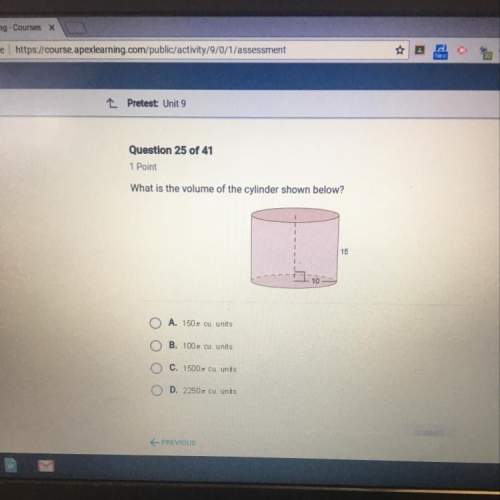Which of the following represents a dilation that is a reduction?
F (x, y) → (3x, 3y)
G (x, y...

Mathematics, 09.04.2021 20:40, angellove1707
Which of the following represents a dilation that is a reduction?
F (x, y) → (3x, 3y)
G (x, y) → (0.3x, 0.3y)
H (x, y) → (x +3, y + 3)
J (x, y) → (2x, 2y)

Answers: 1
Other questions on the subject: Mathematics

Mathematics, 21.06.2019 17:30, hwhite41
Is trapezoid abdc the result of a dilation of trapezoid mnpq by a scale factor of ? why or why not? yes, because ab and cd are each the lengths mn and qp. yes, because sides ab and cd are parallel to sides mn and qp. no, because ab is the length mn but cd is the length qp. no, because sides ab and cd have different slopes from sides mn and qp.
Answers: 1


Mathematics, 21.06.2019 20:00, arianaaldaz062002
If the simple annual interest rate on a loan is 6, what is the interest rate in percentage per month?
Answers: 1

Mathematics, 21.06.2019 23:40, haybales6019
Cos^2x+cos^2(120°+x)+cos^2(120°-x)i need this asap. pls me
Answers: 1
Do you know the correct answer?
Questions in other subjects:

English, 16.08.2019 17:10



English, 16.08.2019 17:10


Biology, 16.08.2019 17:10



Mathematics, 16.08.2019 17:10

English, 16.08.2019 17:10








